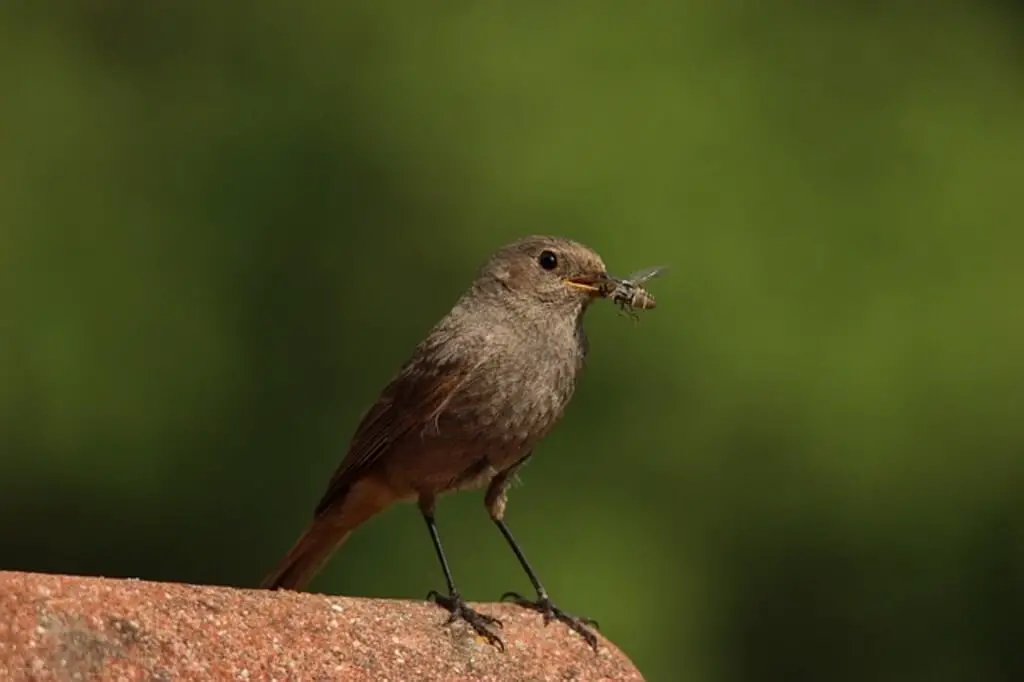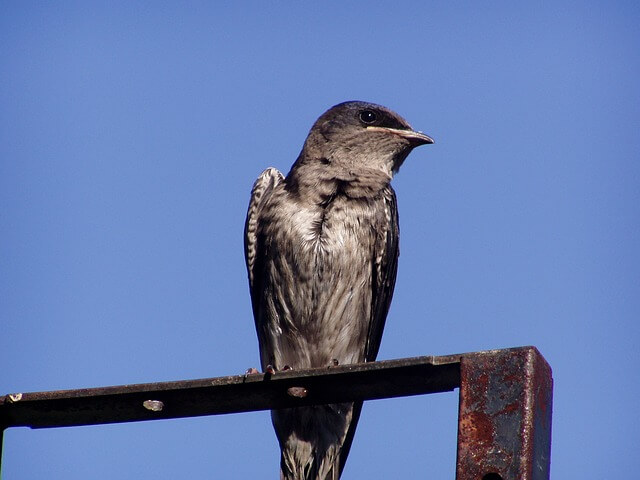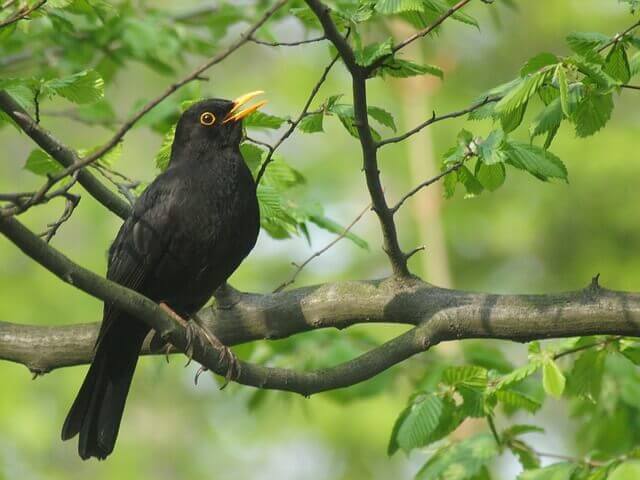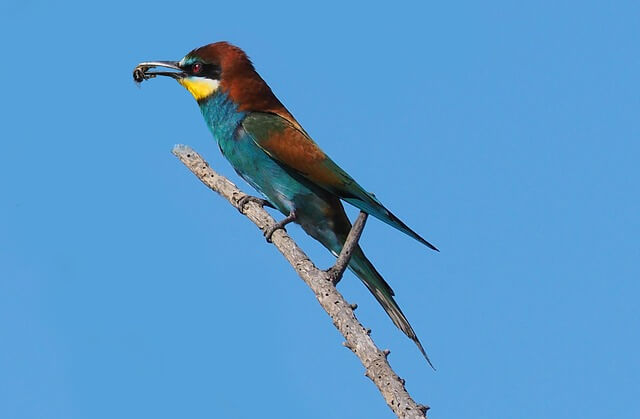In the world of avian dining, some birds have developed a taste for wasps and bees. These agile creatures employ various hunting techniques, from snatching honeybees mid-air to ambushing them while they indulge in nectar.
In this article, we’ll introduce you to 22 such birds that eat wasps and bees. With detailed photos, identification tips, and intriguing facts, you’ll gain a deeper understanding of these feathered connoisseurs of nature’s sweetest and sometimes stingiest treats.
Table of Contents
- 1 Magpies
- 2 Purple Martins
- 3 Swallows
- 4 Cardinals
- 5 Honeyeaters
- 6 Mockingbirds
- 7 Tanagers
- 8 Starlings
- 9 Blackbirds
- 10 Bee-eaters
- 11 Chickadees
- 12 Warblers
- 13 Sparrows
- 14 Bluebirds
- 15 Kingbirds
- 16 Woodpeckers
- 17 Blue Jays
- 18 Wrens
- 19 Catbirds
- 20 Nighthawks
- 21 European Honey Buzzard
- 22 Ruby-throated Hummingbirds
- 23 Author
Magpies
Magpies are a type of bird that live in Europe and North America. They are considered to be scavengers, and will eat a variety of insects, such as flies, beetles, butterflies, caterpillars and earthworms on lawns.
If the opportunity rises, magpies will occasionally consume wasps and bees while foraging for food on the ground or low branches of trees; however, this does not happen very often.
Purple Martins
Purple Martins are some of the most spectacular birds found in North America. The Purple Martin is a migratory bird, that winters in South America and summers north of the equator. The Purple Martin is known for its aerial acrobatics as it swoops down to catch insects on the wing.
They eat everything from flies to dragonflies, but their favorite food might be wasps and bees. These stinging insects seem to make up a large percentage of what they feed on.
Swallows
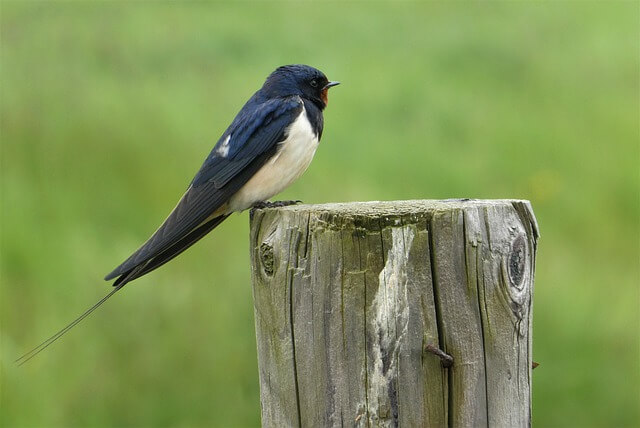
Swallows are a type of bird that can also be found in North America, South America, Europe, Africa and Asia. Swallows will usually be on the lookout for bees and wasps during their search for food.
Once spotted, swallows will dive from high up to catch these insects mid-flight. This may seem like a good thing because it means fewer bees and wasps around, but if you have a garden or farm, this could be a problem.
Cardinals

The Northern Cardinal is a beautiful, medium-sized songbird that has been spotted all over North America. They are also one of the worst enemies to your bees and wasps.
The cardinal can be found in forests, shrublands, thickets, backyards, and urban areas as well. It is a common sight in most gardens during summer months because they like to eat insects from flowers or from beneath leaves on trees or bushes.
Honeyeaters
Honeyeater birds are found in Australia and New Guinea, and New Zealand. The habitat of honeyeater birds ranges from coastal areas to mountain regions. Honeyeaters are birds that have a wide variety of food preferences. These animals will eat just about anything, including honeybees and wasps.
Many people think that honeyeaters prefer to consume nectar from flowers or other types of fruit, but they will also enjoy consuming bugs like honeybees and wasps when the opportunity arises. Honeyeaters are generally not aggressive towards people, and it is common for them to simply fly away if approached by someone in their natural habitat.
Mockingbirds
Mockingbirds are omnivores with a diet that includes insects, small mammals, amphibians, reptiles, eggs and fruits. They enjoy eating honeybees and wasps the most, which is why they are often found in beehives or around nests.
Mockingbirds have excellent hearing that helps them find their prey easily by listening for buzzing sounds made by insect wings, as well as detecting their movement through bushes.
Tanagers
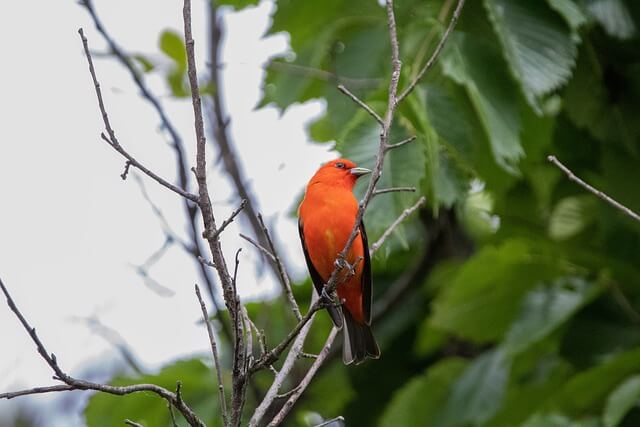
Tanagers are a small, colorful bird that can be found in most areas of North America. The tanager is known for its unique vocalizations which include whistles, trills, chirps and song-like melodies. A typical habitat for the Tanager includes shrubs or trees close to water sources such as lakes or streams.
Tanagers love to eat honeybees, bumblebees, paper wasps, yellow jackets, hornets and even mud daubers. They provide important nutrients for the tanager’s diet. Insects can make up to 20% of a tanager’s total food intake in a day.
Starlings
European Starlings are beautiful, iridescent birds that can be found in North America. The Starling is originally from Europe, Asia, and Africa. European Starlings love to consume insects such as beetles, grasshoppers, flies, caterpillars! However, most people don’t know that these birds love to eat honeybees and wasps!
The starlings swoop down from trees or buildings and catch them in mid-air. They can be seen all over the place feasting on these tasty insects with gusto.
Blackbirds
Blackbirds are known to feed on wasps and honeybees. These birds fly near flowers, seeking nectar, while the insects they usually prey on sit nearby, waiting for their chance to attack. The blackbird grabs one of these unsuspecting insects with its beak and proceeds to devour it whole.
Blackbirds have a strong sense of smell that can detect predators from a distance, so if they happen upon an insect as well, it is not too difficult for them to decide which meal is more appetizing.
Bee-eaters
This bird is a species of birds in the Meropidae family, sometimes called bee-eaters for their habit of catching these insects on the wing and consuming them as food. There are 27 species of this type, and they occur throughout Africa, Eurasia, Madagascar, New Guinea and Australia.
Bee-eaters live on insects, which they catch with their beaks as they cling to flowers or branches. They then hold them with one claw while hammering them into submission on the perch using another claw. The tongue is hooked like a bird of prey’s so that it can “spit” the bee.
Chickadees
Chickadees are small songbirds native to North America, Europe, and Asia. They live year-round in coniferous forests where there is an abundance of dead wood or food sources for them to feast on. Chickadees are not just a little bird that eats seeds and berries, they also love to feast on honeybees and wasps!
Chickadee’s diets include both insects and nectar from flowers. But if the opportunity arises, chickadees will also take advantage of eating other food sources such as: caterpillars, spiders, aphids and bees.
Warblers
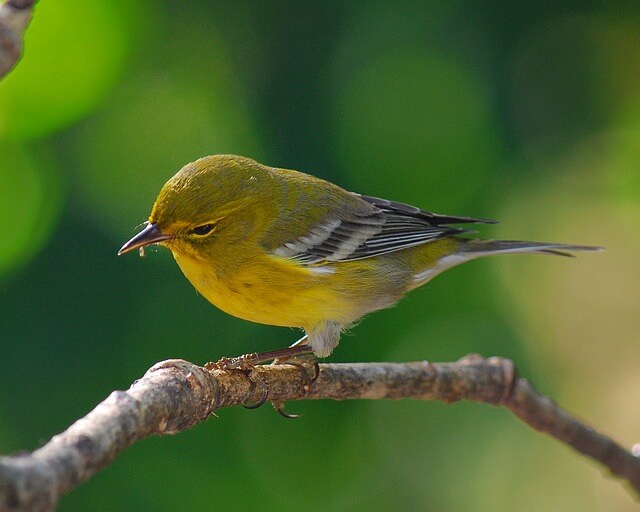
Warblers are small songbirds that live in North America. The tiny, beautiful warblers that we see in the summer are voracious predators. Warblers have been observed eating wasps and honeybees by catching them on the wing.
Some warblers also capture insects in mid-flight by snapping their beaks shut to trap them inside, and then biting off the insect’s head to consume it. However, they will also eat other things like fruits and berries. It is well known that they have a fondness for the juicy berries of poison ivy plants.
Sparrows

Sparrows are small birds that can be found in gardens, meadows and forests. These birds eat a variety of insects, including wasps and bees. In fact, they seem to be quite fond of the taste of these insects. The sparrows do not need to use their talons or wings in order to catch a bee or wasp.
They will often stalk them and wait for the insect to land on something before grabbing it with their beak. The birds also like chasing butterflies because they have an almost identical body shape as a bee or wasp.
Bluebirds

Bluebirds are common, widespread birds that can be found in gardens and parks. Bluebirds prefer to catch other insects like flies, caterpillars, spiders, crickets and beetles. They also enjoy berries and fruit like blackberries and cherries as well as nectar from flowers such as roses, tulips and daisies!
However, there are times when wasps or bees enter their territory and need to be dealt with in order for them to survive on a healthy diet of fruits and nectar.
Kingbirds
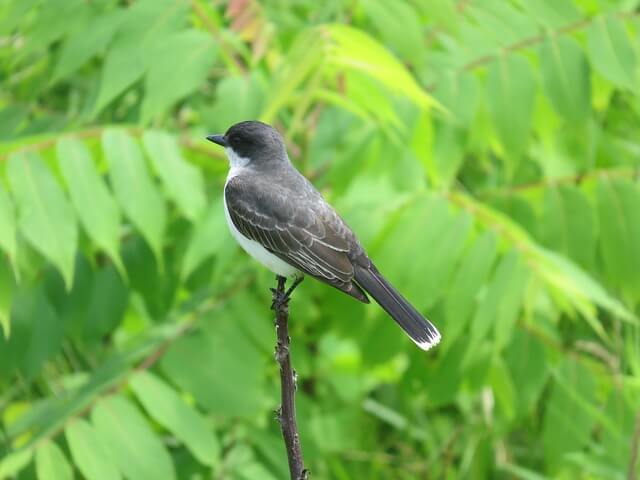
Kingbirds are a type of bird that are often seen hovering around flowers looking for food sources. They have been known to fly through large numbers of insects during feeding periods. This bird is not only attracted to the nectar in flowers, but also by the insect activity around them, such as wasps and bees.
When they see these insects on the flower or hovering near it, they will swoop down and grab them with their beaks. They eat wasps and bees to supplement their protein intake.
Woodpeckers
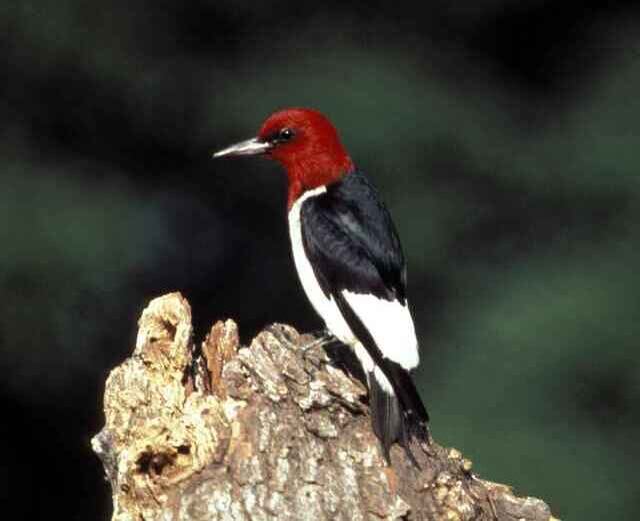
Woodpeckers are birds that survive by eating bees and wasps. These small creatures can also eat other insects, but their diet is mainly composed of honeybees and yellow jackets. They have a long tongue with which they can extract ants, larvae, grubs, wasps and bees from tree bark.
The birds also feast on beetle larvae, caterpillars, ants, and spiders from time to time. However, when it comes down to what, woodpeckers crave most often is those pesky flying insects!
Blue Jays

Blue Jays are common throughout North America, with populations in the Eastern United States, Canada and Mexico. Blue Jays will eat honeybees, wasps and even raid a beehive for some larvae.
These colorful blue birds will dive into a swarm of bees, snatch one in its beak, fly off to a branch with it dangling from its mouth, then devour the bee. Sometimes they’ll even chase after honeybees on the ground or pick them up out of flowers.
Wrens
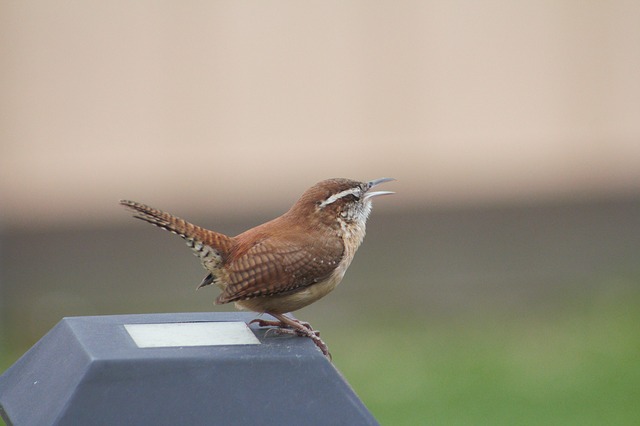
In the realm of avian appetites, many birds turn to insects and spiders for sustenance, and Wrens are no different. However, these small, unassuming birds bring a unique twist to their diet: wasps and bees. When a wasp or bee ventures too close to a wren, it becomes a swift target.
The wren, armed with its sharp beak, darts down to seize its prey and whisks it away for a private feast. But that’s not all – wrens also savor spiders, ants, caterpillars, moths, along with a side of berries and seeds.
Catbirds
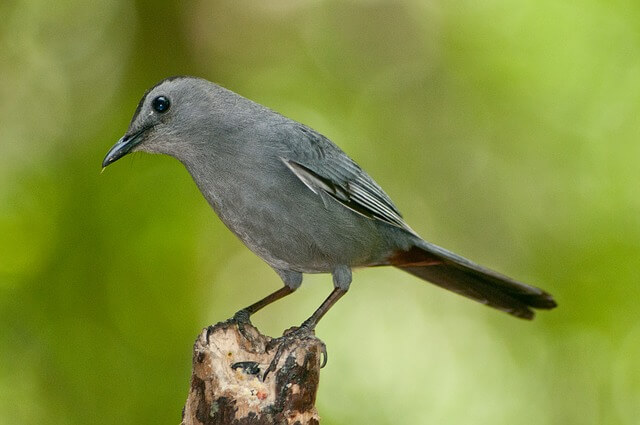
Catbirds are found in North America and have been known to eat wasps and bees. Catbirds have a specialized tongue that allows them to collect the nectar from flowers, but this species also eats insects such as caterpillars, flies, ants, grasshoppers and more.
These insects are full of nutrients, so the catbirds have been observed to survive off this diet for long periods of time. The birds typically eat these insects on or near tree branches in order to minimize their movement from predators.
Nighthawks
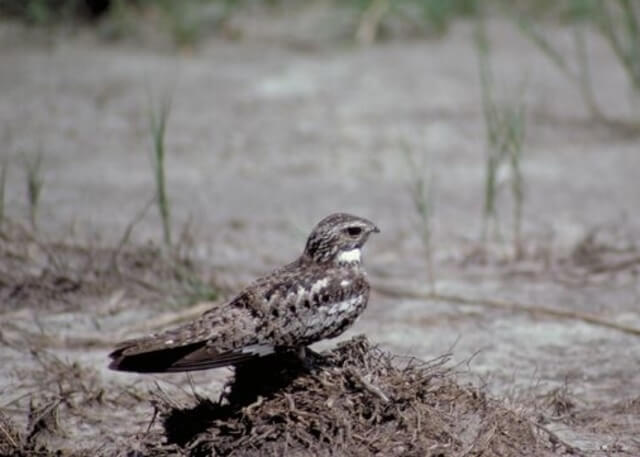
Nighthawks are not known for their beauty. They do not have a colorful plumage, or a sweet song. They live at night and feast on flying insects that buzz around in the dark, like bees and wasps.
These pesky creatures seem to have no chance against these clever predators, who swoop down from the sky to take them away in their beaks before they can sting them. Bees and wasps will never know what hit them when they find themselves trapped in the powerful grip.
European Honey Buzzard
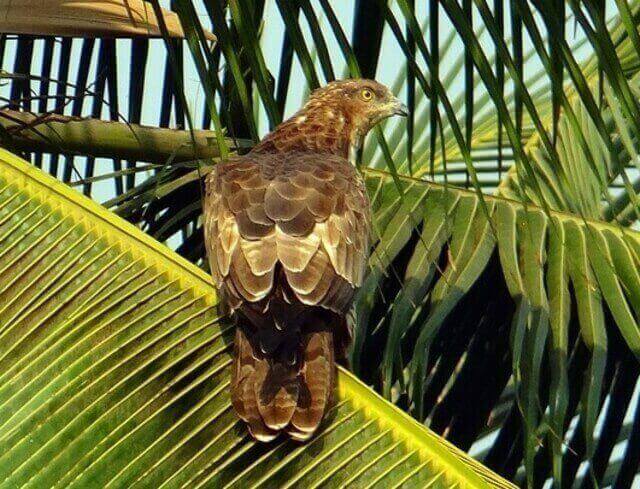
The European Honey Buzzard is a type of bird that is often found in Europe, Africa, Asia and Australia. These birds prefer to nest on the ground or on a low branch near water sources like rivers or lakes.
The European Honey Buzzard typically eats bees, flies, and wasps when it can find them. However, the most common food source for this bird are small rodents like mice and voles, which they will also feed on when given the opportunity.
Ruby-throated Hummingbirds

Ruby-throated Hummingbirds live in North America east of the Rocky Mountains and south to northern Mexico. These Hummingbirds are known for their large appetite and will consume a variety of insects, spiders, flowers, and nectar.
They have been seen consuming honeybees and wasps in addition to the more common food sources. Ruby-throated hummingbirds are known for their large appetite.

